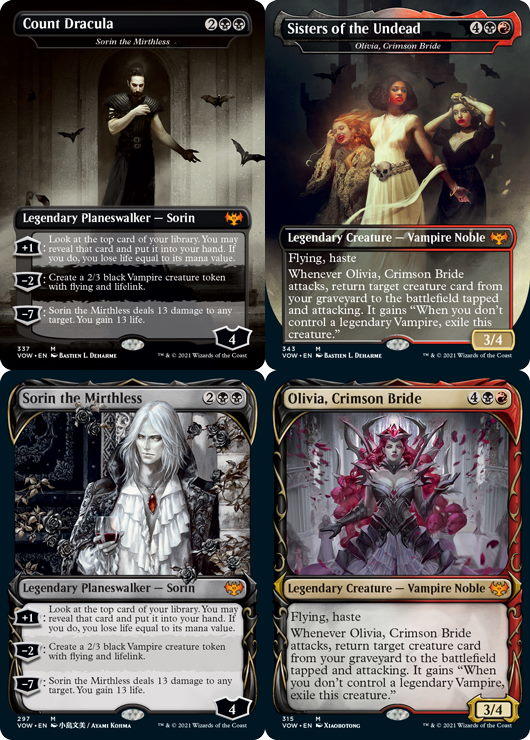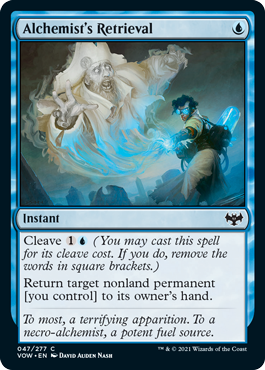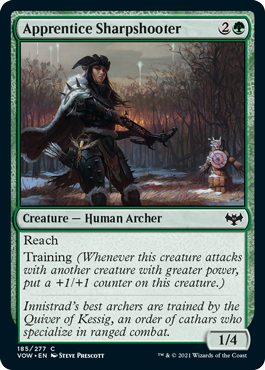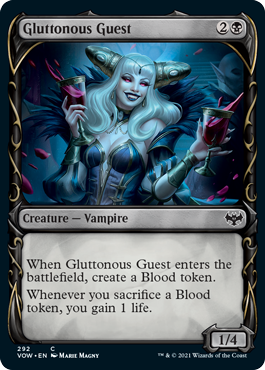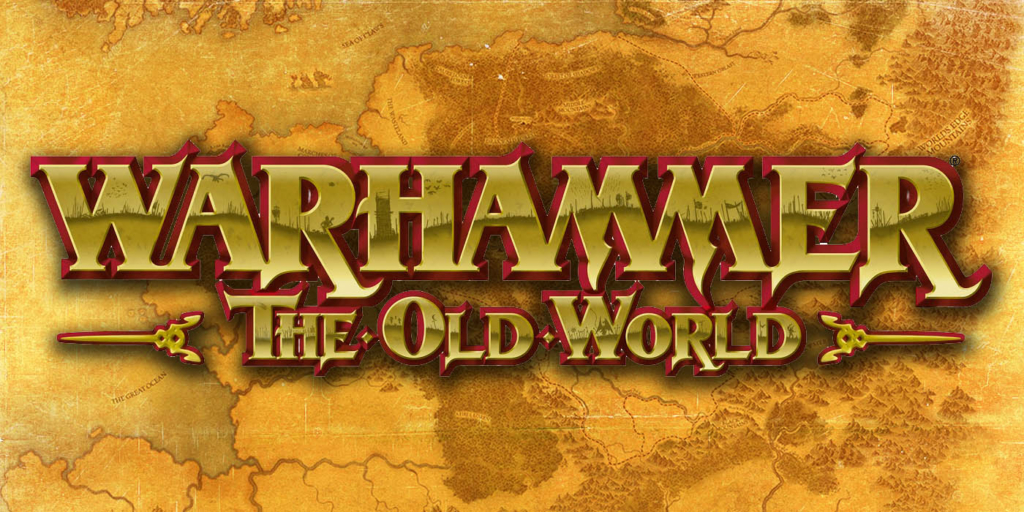MTG: Crimson Vow’s Release Notes Paint A Beautiful, Bloody Picture
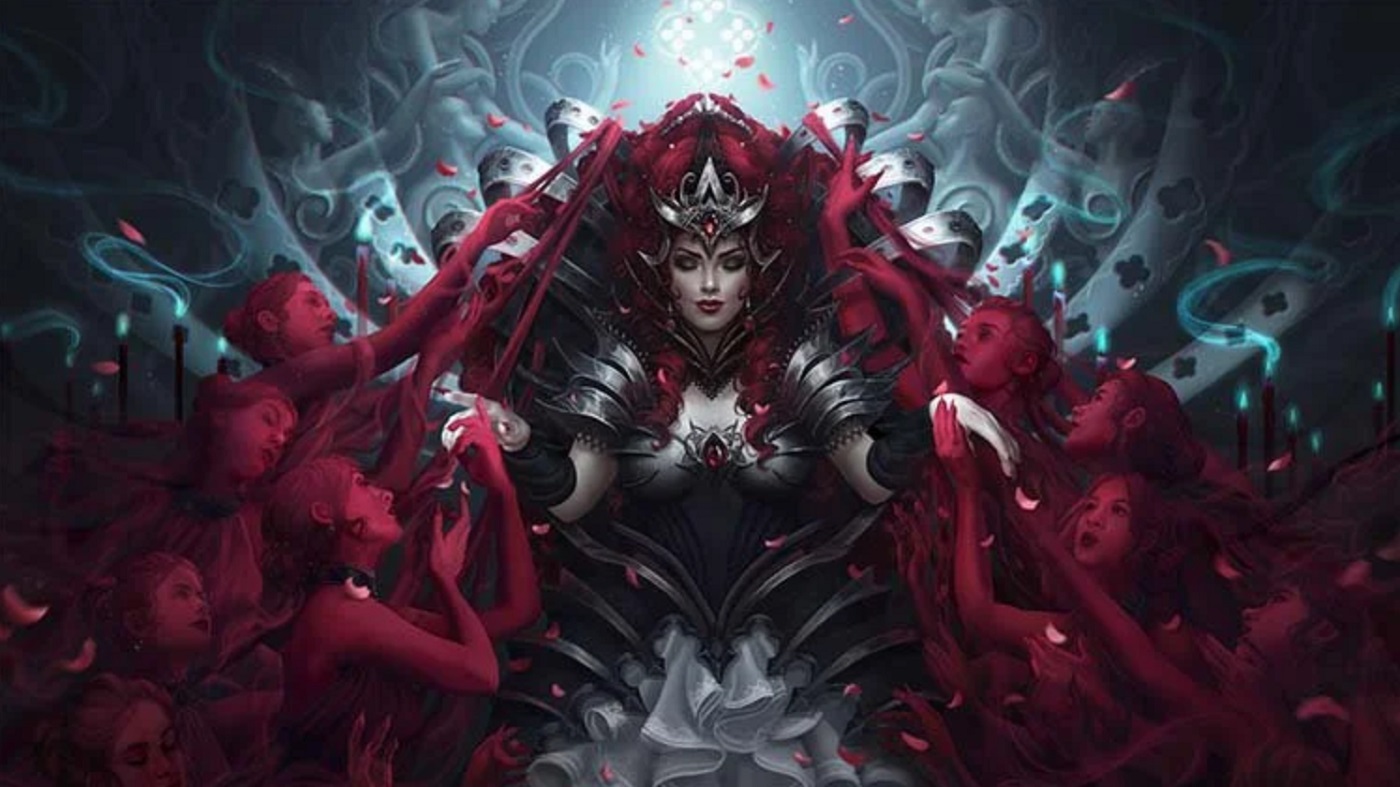
Crimson Vow’s official release is this coming Friday, but ahead of that, take a look at the newest set of “release notes” for the set.
Innistrad: Crimson Vow officially releases November 19th, but today we’re taking a look at the release notes for the new set, which clarify the way some of the new rules work–including how you can use the Crimson Vow Dracula MTG cards, and some of the new keyword abilities included in the set. Let’s dive right on in.
First things first, let’s talk about how the Dracula cards work. Now, granted most every card in Crimson Vow features a “dracula” but we’re talking about the ones that specifically feature draculas from the story Dracula and who have official card names as well as their Dracula names. Cards like Sorin the Mirthless or the Olivia, Crimson Bride, pictured above.
Innistrad: Crimson Vow Dracula cards with the VOW set code and numbered 329–345 and 403 feature a name other than their own on the title bar, with the normal name in a secondary title bar below it. For game play purposes, these cards have only the card name specified in the secondary title bar.
Now on to some of the new abilities. First up, Cleave, which allows you to pay a different mana cost to remove words [in brackets] from rules text. Here are the notes about that:
- If you cast a spell for its cleave cost, that spell doesn’t have any of the text in square brackets while it’s on the stack.
- A cleave cost is an alternative cost that’s paid instead of the spell’s mana cost. Casting a spell for its cleave cost doesn’t change the spell’s mana value.
- You can’t cast a spell for both its cleave cost and another alternative cost. For example, if an effect gives an Alchemist’s Retrieval in your graveyard a flashback cost of {U}, you can’t cast it from your graveyard for its cleave cost.
- If an effect allows you to “cast a spell without paying its mana cost,” you can’t cast that spell for its cleave cost.
Training, on the other hand, is an ability that makes creatures stronger when they work with creatures stronger than them. It’s a very thematic ability that will play well with a lot of decklists. But it’s worth noting you can’t cheese your way into it:
- A creature’s training ability triggers only when both that creature and a creature with greater power are declared as attackers. Increasing a creature’s power after attackers are declared won’t cause a training ability to trigger.
- Once a creature’s training ability has triggered, destroying the other attacking creature or reducing its power won’t stop the creature with training from getting a +1/+1 counter.
Finally we come to Blood Tokens, which are an artifact that fuel different vampire abilities, adding some extra value to the normal blood token mechanic, which is a bit costly for what it does (pay one colorless, discard a card, and sacrifice the token to draw a card).
- If an effect refers to a Blood token, it means any artifact token with the subtype Blood, even if it has gained other subtypes.
- You can’t sacrifice a Blood token to pay multiple costs.
- Some triggered abilities trigger “whenever you sacrifice a Blood token.” These abilities trigger regardless of why you sacrificed that Blood token.
- Some spells that instruct you to create a Blood token require targets. You can’t cast these spells without choosing all required targets, and if all of those targets become illegal targets, the spell won’t resolve and you won’t create any Blood tokens. If some but not all of those targets become illegal, you’ll do as much as possible, including creating Blood tokens.
Good luck

